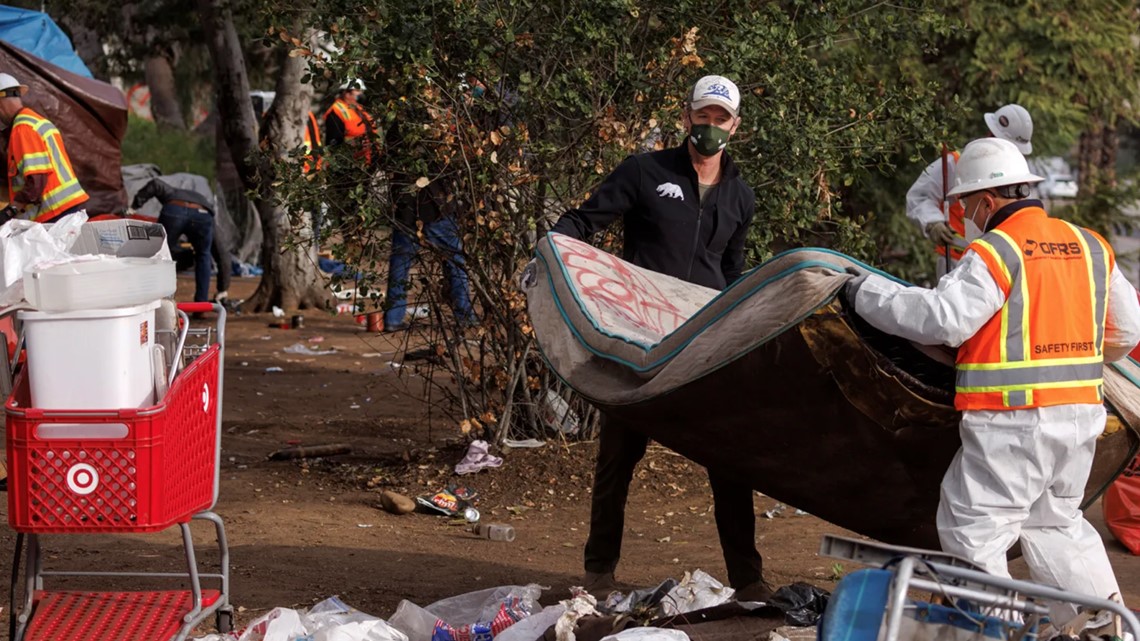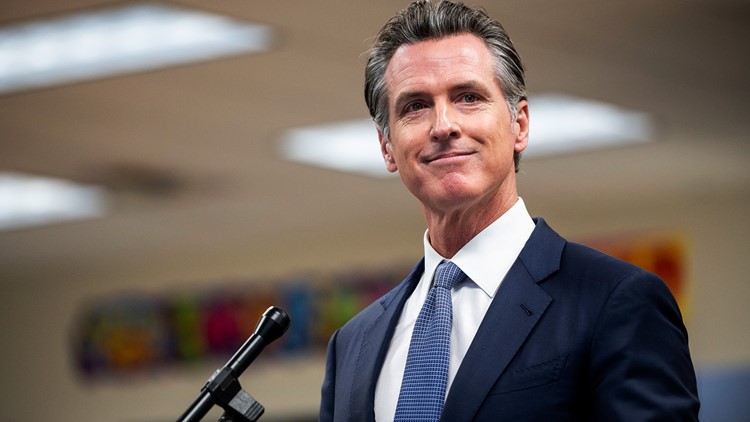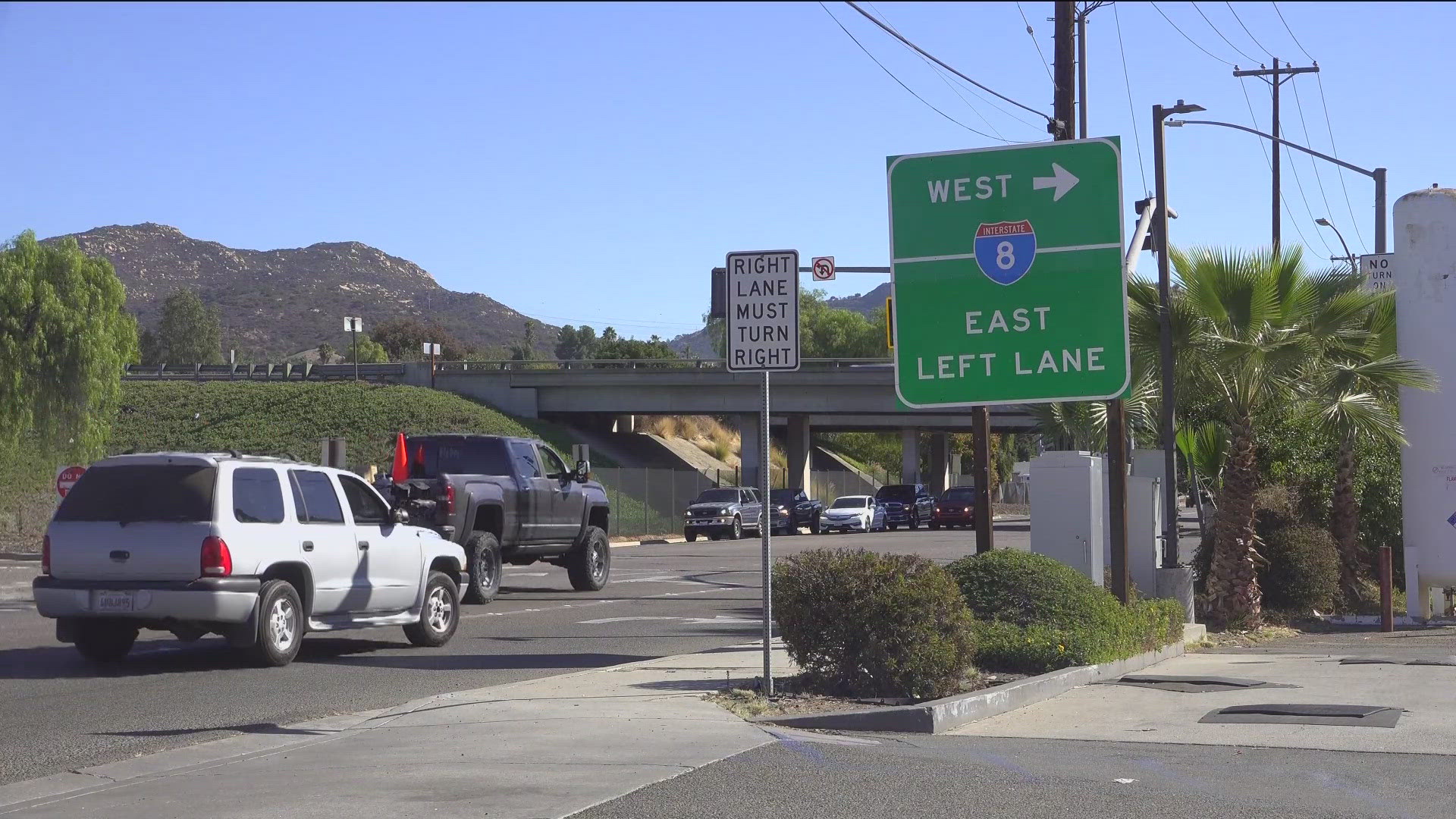This story was originally published by CalMatters.
Gov. Gavin Newsom is an unlikely champion of California’s down and out. Yet the wine entrepreneur, who built his political career and fortune with help from the state’s wealthy elite, campaigned on a promise to address California’s disparities – and do so boldly.
From his first day in office in January 2019, Newsom called the manifestations of California’s inequality – homelessness, poverty and rising costs – “moral imperatives,” not just policy priorities. “So long as they persist, each and every one of us is diminished,” he declared.
Those inequalities persisted and were laid bare by two years of the COVID-19 pandemic, a tumultuous time that saw the governor overcome a Republican-led effort to recall him from office last September.
Now with the pandemic receding, the economy rebounding and no major political opposition standing in his way to reelection this year, Newsom has the opportunity to return to his original priority of reducing the stain of poverty on the state.
He is expected to address the issue today in the final State of the State speech of his first term. ”There is going to be an explicit call out on inequality, and the stakes,” said an aide, who spoke only if not named because they were not authorized to give a preview of the speech. “One of the themes of the speech is going to be democracy, and tying that to how unchecked inequality undermines democracy.”
Some experts and advocates say Newsom’s efforts to close the economic divide may determine his legacy – and help set him apart from his predecessor and fellow Democrat, Jerry Brown, who insisted state government could only go so far in closing the divide between rich and poor.
“If the comparison is past governors in California, he’s trying to do a lot,” said Chris Hoene, director of the California Budget & Policy Center, a nonprofit that researches policy affecting low-income Californians. “If the comparison is where we were when he took over as governor, and where we are today, he’s facing a ton of headwinds. And the urgency and the need drives expectations about him doing more.”
Nationally, the jobs recovery is in full swing, and though California has lagged other states, it could at last see improvements as mask mandates loosen and the economy returns more to normal. The pandemic – and record state budget surpluses – have given Newsom the opportunity to address the state’s inequalities. The Democratic leaders of the state Assembly and Senate leaders also say they want to use the budget to create a more inclusive recovery and more equitable economy.
But Assembly GOP leader James Gallagher of Yuba City said it’s the policies of Democrats that are driving inequality.
“We have a huge surplus because the wealthiest are doing so well,” he said. “That doesn’t tell the story of the middle- and low- income earners in this state.”
For instance, he said working families are getting hammered by the state’s high cost of gasoline, which according to AAA has now topped an average of $5 a gallon – an increase accelerated by the Ukraine war. Gallagher and other Republicans also blame the state’s gas tax, which Democrats raised in 2017 under Brown to repair roads and bridges and expand mass transit. Newsom has proposed putting off a scheduled July increase, but the governor has met resistance from his own party in the Legislature. The climate change agenda of California Democrats has also driven up the cost of utilities, further deepening inequality, Gallagher said.
“I think he genuinely cares about this issue, but I think that his policies – the policies of either he, or Democrats in the Legislature – have made the problem worse,” Gallagher said. “The other problem is that the governor has a lack of follow-through. He’s big on pronouncements and announcing new programs, but pretty short on implementation and results.”
What’s Newsom’s record?
In his State of the State speech last year, Newsom returned to the theme of inequality, indicating his belief the pandemic was “widening gaps between the haves and the have-nots.” “California’s most acute preexisting condition remains income inequality,” he said.
In his three years in office, he has pushed through several significant initiatives:
- Newsom has steadily expanded Medi-Cal coverage to include undocumented people until they turn 26 and once they turn 50, and in his January budget proposed covering those previously excluded. But the expansion would still leave several hundred thousand undocumented immigrants unable to qualify because they earn above the program’s annual income thresholds.
- In 2019, Newsom expanded the state’s Earned Income Tax Credit and the Young Child Tax Credit to help boost the wages of low-paid workers and families. In 2020, he signed a law allowing anyone with an Individual Taxpayer Identification Number to qualify for the expanded earned income tax credit. That made undocumented workers eligible to receive hundreds, or thousands of, dollars each year. Last year, he signed a measure giving $600 one-time payments to those who receive the state’s earned income tax credit, along with an extra $600 for certain undocumented taxpayers not eligible for some federal aid.
- During the pandemic, California expanded eligibility for several safety net programs, including food assistance, allowing for more people to participate. In particular, the state paused the recertification process in the state’s CalFresh program, which provides food benefits to some 2.6 million low-income households. And the state last year created a universal free school meals program, doing away with a previous income requirement.
- When taking office, Newsom announced plans to assist working parents with a six-month, paid family leave program. He has so far extended the program to eight weeks per parent. In 2020, he signed a bill expanding unpaid family leave to include smaller employers, but in 2021 vetoed a bill intended to extend the program to low-income workers. The governor has also made progress on his goals to expand preschool, with a plan to provide universal transitional kindergarten for four-year-olds by 2025.
- Experts and activists say making higher education more affordable is important to reducing inequality in the state. Last year, the administration eliminated age and time-out-of-high-school requirements for Cal Grant scholarships to community colleges. But the governor vetoed a bill that would have made Cal Grants more broadly available. Lawmakers last year also signaled the intent to expand a scholarship for middle-class students in the state, as well as more slots in public universities for California students, though lawmakers must agree this year to fund those promises.
- The governor’s efforts with economic recovery, trying to target funds regionally could help the Central Valley and other parts of the state that are struggling. Such work might not be easy; a legislative effort to retrain oil workers has already sparked a political fight among some of the state’s labor unions.
Still, advocates say the state could be doing more to shrink the economic divide.
What do the numbers show?
While recessions tend to widen income disparities between rich and poor, earnings have increased for low-income workers while unprecedented government relief kept millions from falling into poverty. That’s despite the sharp downturn in 2020, and the disproportionate number of pandemic-related job losses hitting low-wage sectors. During the recovery, some of the biggest gains are in the leisure and hospitality sectors, according to Sarah Bohn, a vice president and policy research chairperson with the Public Policy Institute of California.
“Wages are picking up the most at the low-end of the spectrum, even though we’re still in a recovery period with elevated unemployment,” Bohn said. “It might be that inequality is actually decreasing during the pandemic – which is kind of crazy, and we’ll know more soon – but when you just look at the wage statistics, the sectors that are lowest paid have the highest increase in wages.”
Nationally, data from the Atlanta Federal Reserve Bank shows typical wages for the bottom 25% of earners growing faster than other income groups. Meanwhile the Biden administration has highlighted research from two influential U.C. Berkeley economists underscoring that economic growth has been broadly shared since he took office in January 2021.
In California, income inequality statistics for 2020 are not yet available, but the trend has been one of dramatic widening over the long run, with the modern economy placing a premium on highly educated workers. Analyzing pretax income and including cash from some safety net programs, the PPIC found income growth for the bottom 10% of families in California lagging significantly behind the top 10% from 1980 to 2019.
David Grusky, director of the Stanford Center on Poverty and Inequality, said that while incomes may be increasing on the bottom end, those with higher incomes were less interrupted by job losses and many saw a significant rise in the value of their assets.
“Those people who had money in the stock market fared well, and those are the people who are well off,” he said.
With its highest earners doing well, and a major boost in federal aid, California’s budget has been flush with surpluses during the pandemic. And Congress last year passed President Biden’s American Rescue Plan, which California has used to address some of its longstanding inequities. Newsom and legislators have invested billions in homelessness programs, affordable housing, aid to undocumented immigrants and its youth mental health system.
The youth mental health system reforms are “transformational and are expected to be permanent,” said Ed Lazere, a researcher who tracks state fiscal policy at the Center on Budget and Policy Priorities in Washington, D.C.
Focus on homelessness
In many ways, much of Newsom’s political career has been defined by one of the most visible manifestations of the state’s extremes – homelessness. He garnered political attention and notoriety from activists with his “care not cash” initiative as a San Francisco supervisor, a measure intended to cut general assistance programs for the homeless in exchange for housing and other services. He often walked through the city’s Tenderloin, where he saw homelessness for himself.


In 2020, just before COVID, Newsom dedicated his State of the State address solely to the subject. During the pandemic, his administration converted dozens of run-down motels into shelters and housing for homeless people. Last year, he and the Legislature allocated $12 billion to homelessness programs. He’s proposing another $2 billion in the 2022-23 budget. He’s also moving ahead with an ambitious plan to clear homeless encampments and offer services to people living in them. And last week, Newsom outlined a plan to allow courts to force some homeless individuals with serious mental illness and substance use disorders into treatment, while also providing some services.
After all that, homelessness remains one of the biggest problems facing his administration. Two-thirds of voters in a February poll from UC Berkeley’s Institute of Governmental Studies said he’s doing a poor or very poor job on the issue, contributing to a lower approval rating than before the recall election last September. And along with public perception of rising crime, it may be what gets in the way of a smooth path to a second term in this year’s election.
At the same time, Californians care about inequality: In a November survey by the Public Policy Institute of California, 69% said the gap between rich and poor is growing in their region, and 76% supported increasing government funding so child care is available to more low-income working parents. And how Newsom decides to lead on inequality will matter politically in Sacramento given the number of moderate Democrats and legislators finding themselves in new districts untested by voters, many of whom could be unlikely to support riskier policies without a push from the governor.
Those who advocate for those policies will be watching: “It does seem like Newsom is treating a commitment to reducing poverty as one of his key legacy commitments, and so that’s wonderful,” said Grusky, of Stanford. But “we can do, and should do, even more.”



